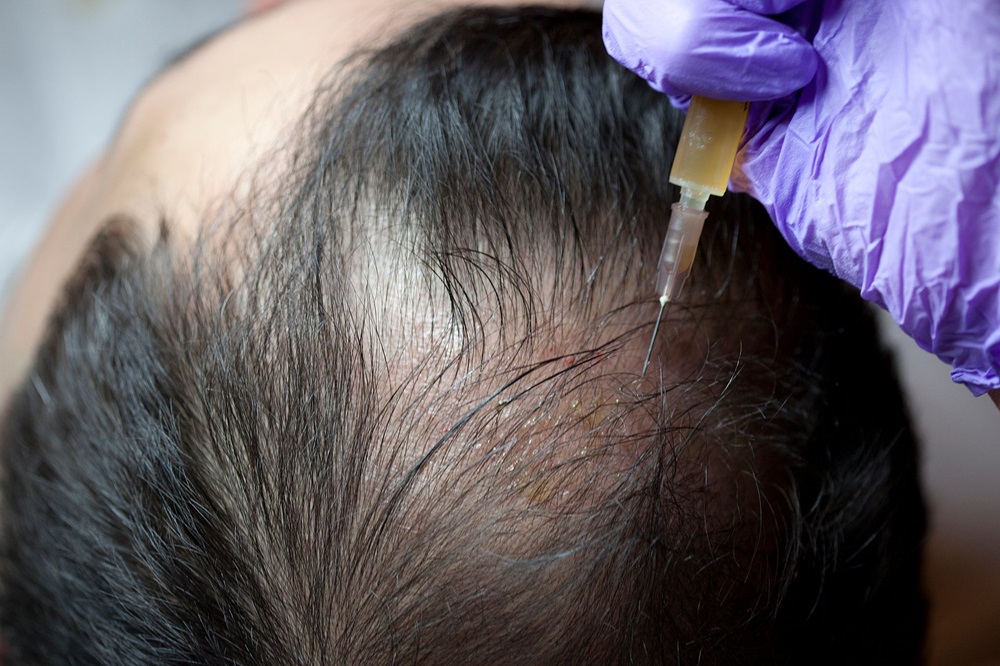Platelet-Rich Plasma (PRP) treatment for hair loss is a therapeutic procedure that uses a patient's own blood to stimulate hair follicles, promoting hair growth and potentially slowing down hair loss. PRP is rich in growth factors and platelets, which play a role in tissue repair and regeneration.
Key Points about PRP Treatment for Hair:
-
How It Works:
- The procedure involves drawing a small amount of the patient's blood, which is then processed in a centrifuge to separate the platelet-rich plasma from other blood components. The concentrated PRP is then injected into the scalp in areas where hair loss is occurring.
-
Growth Factors:
- PRP contains growth factors and proteins that may stimulate hair follicles, encourage hair growth, and prolong the hair growth cycle.
-
Hair Loss Conditions:
- PRP treatment is often used for androgenetic alopecia (common pattern baldness) and other types of hair loss. It may be beneficial for individuals with thinning hair or those in the early stages of hair loss.
-
Treatment Sessions:
- A series of PRP sessions is usually recommended for optimal results. The frequency of sessions varies but may involve an initial series followed by maintenance sessions.
-
Procedure:
- The treatment is typically performed in a medical office. After the blood is drawn and processed, the PRP is injected into the scalp using a thin needle.
-
Topical Anesthesia:
- Some practitioners may use a topical anesthetic on the scalp to minimize discomfort during the injections.
-
Post-Treatment Care:
- Patients are generally able to resume normal activities immediately after the procedure. Post-treatment care instructions may include avoiding certain hair care products and activities for a short period.
-
Results and Maintenance:
- Results vary among individuals, and it may take several months to see noticeable improvements in hair growth. Maintenance sessions may be recommended to sustain the benefits.
Considerations:
-
Patient Selection:
- PRP treatment is generally suitable for individuals experiencing mild to moderate hair loss. It may not be as effective for individuals with extensive baldness.
-
Realistic Expectations:
- While PRP treatment may stimulate hair growth, it's important to have realistic expectations. Results can vary, and not everyone will experience the same degree of improvement.
-
Combination Therapy:
- Some individuals combine PRP treatment with other hair loss interventions, such as medications like minoxidil or finasteride, for a more comprehensive approach.
-
Treatment Timeline:
- The timeline for noticeable results varies, and patients may need to be patient, as it often takes several months to see changes in hair growth.
-
Safety:
- PRP treatment is considered safe when performed by qualified healthcare professionals. It involves using the patient's own blood, reducing the risk of adverse reactions.
-
Alternative Treatments:
- Other treatments for hair loss, such as hair transplantation or laser therapy, may also be considered depending on the individual's preferences and needs.
Before undergoing PRP treatment for hair, individuals should consult with a qualified healthcare professional or dermatologist. The practitioner can assess the patient's specific condition, discuss the potential benefits and limitations of PRP, and recommend an appropriate treatment plan based on the individual's goals and expectations.



